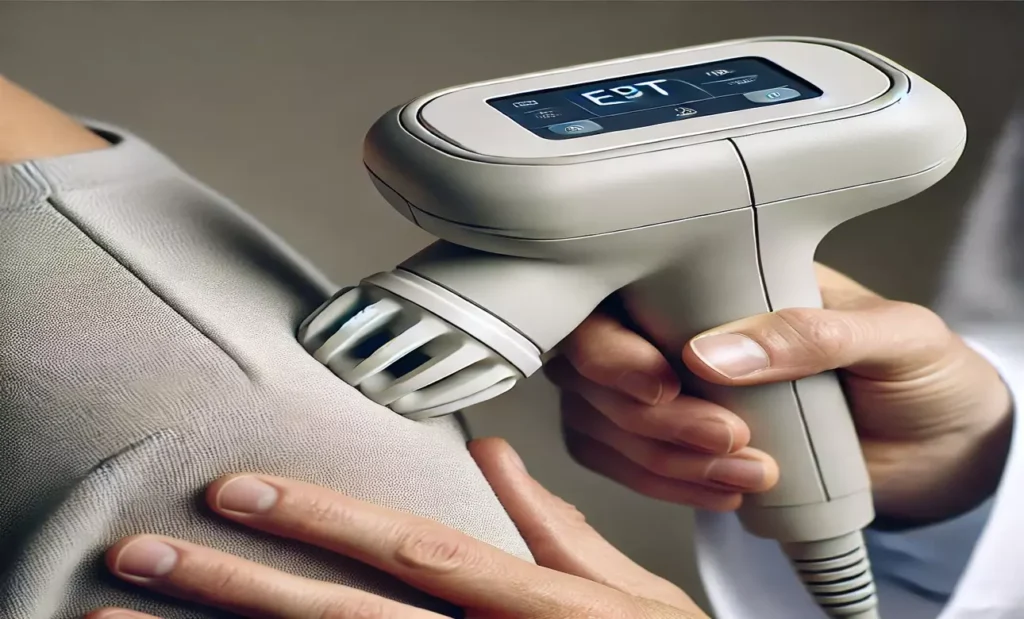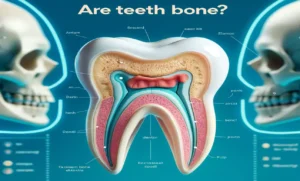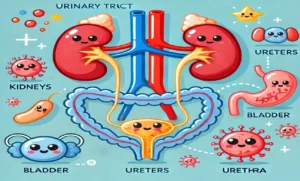EPAT Treatment: Riding the Sound Wave to Pain-Free Living

Imagine a world where chronic pain doesn’t rule your life. A world where you can say goodbye to those nagging aches without going under the knife or popping pills like candy. It sounds too good to be true. Well, buckle up because we’re about to dive into the world of EPAT treatment—a revolutionary approach changing the pain management game.
- What is EPAT Treatment?
- How EPAT Works: The Magic of Sound Waves
- Conditions Treated with EPAT
- Benefits of EPAT Treatment
- The EPAT Treatment Experience
- EPAT vs. Traditional Treatments
- Who is a Good Candidate for EPAT Treatment?
- Potential Side Effects and Risks
- The Cost of EPAT Treatment
- EPAT Success Stories: Real Patient Experiences
- The Future of EPAT in Medicine
- Is EPAT Treatment Effective for Chronic Pain Management?
- How Long Do the Effects of EPAT Treatment Typically Last?
- Frequently Asked Questions (FAQs)
- Conclusion: Is EPAT Treatment Right for You?
What is EPAT Treatment?
Definition and Basic Concept
EPAT, or Extracorporeal Pulse Activation Treatment, is like the cool new kid on the block in pain management. It’s a noninvasive treatment that uses high-energy sound waves to kickstart your body’s natural healing process. It is a wake-up call for your tissues, telling them, “Hey, it’s time to heal.
The Science Behind EPAT
Now, I know what you’re thinking. “Sound waves? Really?” But hear me out. These aren’t just any sound waves. They’re specially designed acoustic pressure waves that penetrate your tissues deep. It’s like giving your cells a mini-massage, boosting blood flow and stimulating metabolism in the treated area.
EPAT vs. Other Shockwave Therapies
You might have heard of other shockwave therapies, but EPAT is like their cooler, more efficient cousin. While they all use sound waves, EPAT is designed to be more comfortable and practical for a broader range of conditions.
How EPAT Works: The Magic of Sound Waves
The EPAT Device
The star of the show is the EPAT device. It looks like a fancy microphone, but instead of capturing sound, it delivers it. This handheld device is the magic wand that sends those healing sound waves into your body.
The Treatment Process
Here’s where the magic happens. The doctor applies a special gel to the treatment area (don’t worry, it’s not slimy) and then uses the EPAT device to deliver sound waves to the painful spot. It’s like a mini-concert for your cells, but they’re getting waves of healing energy instead of music.
Biological Effects on Tissues
These sound waves do more than make noise. They create tiny bubbles in your tissues that expand and pop, causing micro-trauma. Now, before you panic, this is a good thing. This controlled “injury” triggers your body’s repair response, bringing fresh blood, oxygen, and nutrients to the area.
Conditions Treated with EPAT
Musculoskeletal Disorders
Have you got a bad back or Achy knees? EPAT has your back (pun intended). It’s excellent for treating musculoskeletal issues, from tendonitis to bursitis and everything in between.
Sports Injuries
Athletes rejoice. EPAT is a game-changer for sports injuries. Whether you’re dealing with tennis elbow, runner’s knee, or a stubborn hamstring strain, EPAT can help get you back in the game faster.
Chronic Pain Conditions
For those battling chronic pain, EPAT offers a ray of hope. It’s shown promising results in treating conditions like plantar fasciitis, frozen shoulder, and nerve pain.
Benefits of EPAT Treatment
Noninvasive Nature
One of the best things about EPAT is that it does not involve needles, scalpels, or stitches. It is completely noninvasive, meaning there is less risk and less stress.
Quick and Painless Procedure
EPAT treatments are usually quick—5 to 15 minutes per session. While you might feel slightly discomfort during the treatment, most people find it bearable. It’s like a deep tissue massage—intense, but in a good way.
No Downtime
Unlike surgery, taking weeks off work or skipping your favourite activities is unnecessary. Most people can return to their routine after an EPAT session. It’s the closest thing to a lunch-break healing session.
High Success Rate
Here’s the kicker – EPAT has a success rate of around 80-90% in clinical studies. That’s some impressive odds in your favour,
The EPAT Treatment Experience
Before the Treatment
Before starting EPAT, your doctor will thoroughly evaluate it to ensure it’s the right treatment for you. They’ll explain the process and answer any questions you might have. It’s like prepping for a big race—you want to make sure you’re ready to go.
During the Session
You’ll lie down comfortably during the treatment while the doctor applies the EPAT device to the problem area. You might feel a tapping sensation and some vibrations. Some people describe it as a bit uncomfortable but not painful. Think of it as a deep-tissue massage with a high-tech twist.
After-Care and Recovery
After your session, you might have some mild soreness or redness in the treated area. This is normal and usually goes away quickly. Your doctor might give you some simple exercises or stretches to do at home to help the healing process along.
EPAT vs. Traditional Treatments
EPAT vs. Surgery
Surgery is like using a sledgehammer to solve a problem, while EPAT is more like using a precise chisel. It’s less invasive, has fewer risks, and doesn’t require a long recovery period. Plus, there are no scars.
EPAT vs. Medication
While medications can mask pain, EPAT aims to treat the root cause. It’s like the difference between putting a band-aid on a cut and helping it heal faster.
EPAT vs. Physical Therapy
Physical therapy is excellent, but EPAT can speed up the process. It’s like giving your PT routine a turbo boost, helping you recover faster and more completely.
Who is a Good Candidate for EPAT Treatment?
EPAT is excellent for many people, but it’s not for everyone. It’s ideal for those with chronic musculoskeletal pain or sports injuries who haven’t found relief with other treatments. However, it’s not recommended for pregnant women, people with certain medical conditions, or those with pacemakers.
Potential Side Effects and Risks
While EPAT is generally very safe, no treatment is without risks. Some people might experience temporary pain, swelling, or bruising in the treated area. But don’t worry – these side effects are usually mild and short-lived.
The Cost of EPAT Treatment
Let’s talk money. EPAT isn’t always covered by insurance, so it can be pricey out of pocket. However, many people find the cost worth it when they consider the potential for long-term pain relief and improved quality of life.
EPAT Success Stories: Real Patient Experiences
Don’t just take my word for it – many patients swear by EPAT. From the marathon runner who got back on track after a stubborn case of plantar fasciitis to the office worker who finally found relief from chronic shoulder pain, EPAT has changed lives.
The Future of EPAT in Medicine
EPAT is still a relatively new technology, but its future looks bright. Researchers are constantly finding new applications for this technology, from treating erectile dysfunction to improving wound healing. Who knows what other conditions EPAT might help in the future?
Is EPAT Treatment Effective for Chronic Pain Management?
EPAT (Extracorporeal Pulse Activation Technology) appears to be an effective treatment option for chronic pain management:
- High success rate: Multiple sources report that EPAT is 80-90% successful in treating chronic pain conditions. For example, one source states, “Over 80% of patients report less pain or no pain after EPAT treatment.
- FDA-approved: EPAT is an FDA-approved, noninvasive treatment method for acute and chronic musculoskeletal pain.
- Wide range of applications: EPAT can treat many chronic pain conditions, including plantar fasciitis, Achilles tendinitis, tennis elbow, shoulder pain, knee pain, and other soft tissue injuries.
- Clinically proven: Studies have shown EPAT to be effective for various chronic pain conditions. One source mentions it has a “proven success rate equal to or greater than the traditional treatment methods.
- Noninvasive alternative: EPAT offers a non-surgical, drug-free alternative for chronic pain management with minimal side effects and no downtime.
- Accelerated healing: The treatment stimulates metabolism, enhances blood circulation, and accelerates the body’s natural healing processes.
- Quick treatment sessions: EPAT sessions typically last only 5-15 minutes, making it a convenient option for pain management.
- Long-lasting results: While some patients experience immediate relief, full benefits are often seen within 3-4 weeks after treatment and can be long-lasting.
However, it’s important to note that EPAT may not be suitable for all patients, such as those pregnant or with certain medical conditions. Additionally, while it is highly effective for many, it may not work for everyone, and some studies have shown mixed results for specific situations. Overall, the evidence suggests that EPAT is a promising and effective treatment option for many chronic pain conditions, offering a noninvasive alternative to traditional pain management approaches.
How Long Do the Effects of EPAT Treatment Typically Last?
The effects of EPAT (Extracorporeal Pulse Activation Technology) treatment for conditions like plantar fasciitis typically last for an extended period, often providing long-term relief. Here are the key points about the duration of EPAT effects:
- Long-lasting results: The results of EPAT treatment can last for months or even up to a year or more for many patients. One source mentions that results are “long-lasting, capable of producing results for months at a time, or even upward of a year.
- Continued improvement over time: While some patients may experience immediate pain relief, the full benefits of EPAT often develop over several weeks to months after treatment. One study showed significant improvement in plantar fascia thickness at an average follow-up time of 29.4 months (range 12-54 months).
- Variability among patients: The duration of effects can vary depending on the individual and the specific condition being treated. Factors such as the severity of the condition and the patient’s overall health may influence how long the effects last.
- Potential for permanent improvement: For many patients, EPAT can lead to long-term or permanent improvement in their condition. Over 80% of patients report being pain-free or having significant pain reduction after treatment.
- Follow-up treatments: While many patients experience long-lasting relief from a single course of EPAT (typically 3-5 sessions), some may benefit from periodic follow-up treatments to maintain results.
- Comparison to other treatments: EPAT has shown a success rate equal to or greater than traditional treatment methods, including surgery, without the risks or lengthy recovery time.
It’s important to note that while EPAT can provide long-lasting relief for many patients, individual results may vary. Some patients may experience permanent relief, while others may need occasional follow-up treatments to maintain the effects. The best approach is to consult with a healthcare provider to determine the expected duration of effects for your specific condition and treatment plan.
Frequently Asked Questions (FAQs)
Is EPAT treatment painful?
Most patients describe it as mildly uncomfortable rather than painful.
How many EPAT sessions will I need?
Typically, 3-5 sessions are recommended, but this can vary based on your condition.
How soon can I expect results from EPAT Treatment?
Some people feel improvement after the first session, but full results usually take a few weeks.
Are there any age restrictions for EPAT?
EPAT is generally safe for adults of all ages, but your doctor will determine if it’s right for you.
Can I combine EPAT with other treatments?
Yes, EPAT often works well with other therapies like physical therapy.
How long does an EPAT treatment session last?
Most sessions take about 5-15 minutes.
Will I need to take time off work for EPAT treatment?
No, most people can return to normal activities immediately after treatment.
Does insurance cover EPAT?
Coverage varies, so check with your insurance provider.
Are the effects of EPAT permanent?
Results can be long-lasting, especially when combined with proper exercise and care.
Can EPAT replace surgery?
Your doctor will often determine the best treatment plan for you.
Conclusion: Is EPAT Treatment Right for You?
EPAT treatment is like a secret weapon in the fight against chronic pain and injuries. It’s noninvasive, quick, and has shown impressive results for many people. But like any treatment, it’s not a one-size-fits-all solution. If you’re tired of living with pain and looking for an alternative to surgery or endless medications, EPAT might be worth exploring. Talk to your doctor about whether EPAT could be the sound wave that carries you to a pain-free future. After all, isn’t it time you returned to living your best life?






